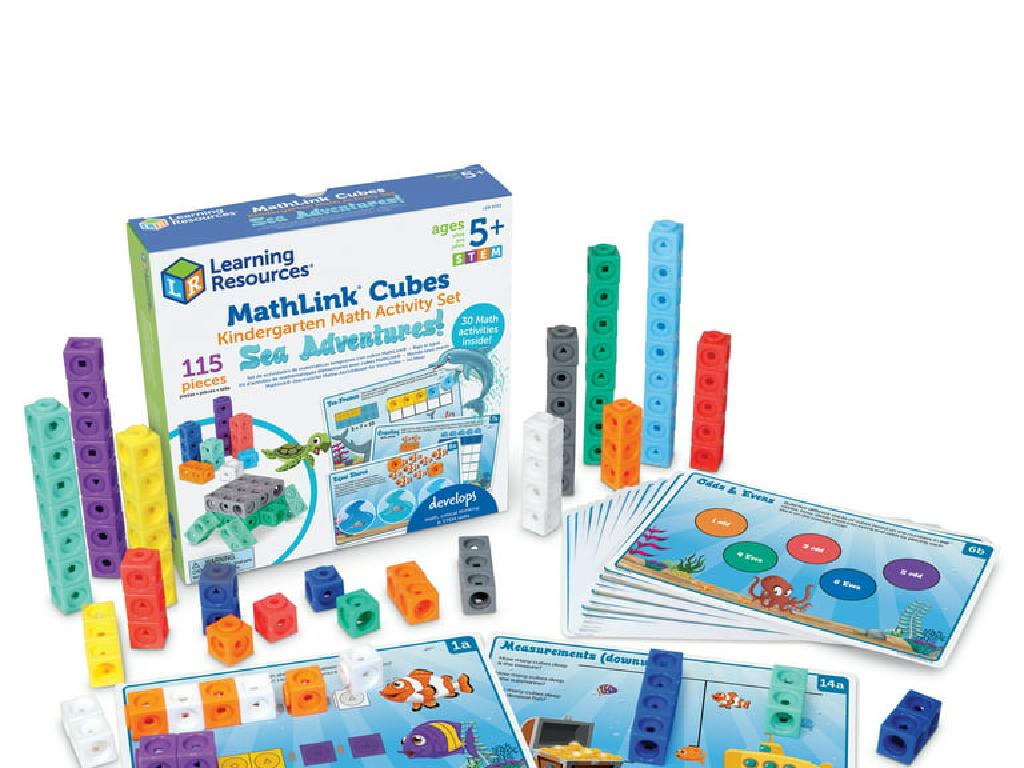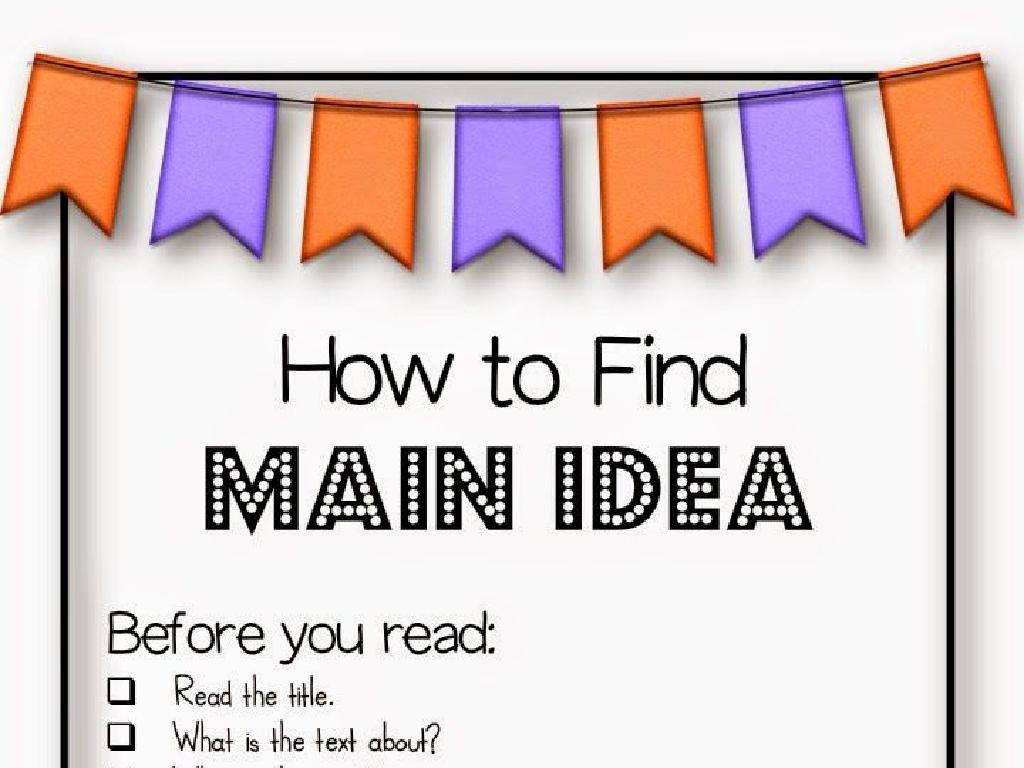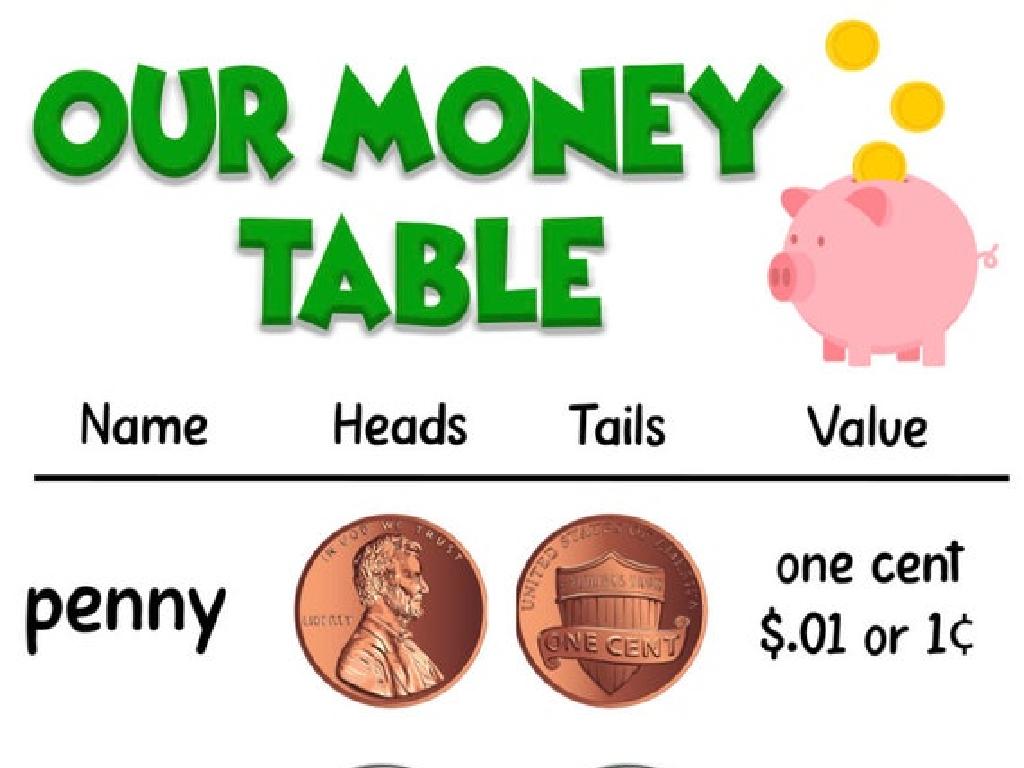Complete The Subtraction Sentence: Up To Three Digits
Subject: Math
Grade: Third grade
Topic: Subtraction: Three Digits
Please LOG IN to download the presentation. Access is available to registered users only.
View More Content
Welcome to Subtraction!
– Becoming subtraction experts
– Subtract numbers up to three digits
– Learn to subtract numbers like 456 – 123
– Why subtraction matters daily
– Use subtraction when shopping or cooking
– Practice makes perfect
– We’ll do fun activities to improve our skills
|
Today’s lesson is designed to help students become comfortable with subtracting numbers that have up to three digits. Start by explaining the concept of subtraction as ‘taking away’ and how it’s used in various situations, such as making change while shopping or measuring ingredients in cooking. Emphasize the importance of understanding place value when subtracting larger numbers. Engage the class with examples and encourage them to think of situations where they might use subtraction outside of school. Include practice problems and interactive activities to reinforce the lesson, catering to different learning styles. By the end of the class, aim for each student to feel confident in their ability to tackle subtraction problems with larger numbers.
Mastering Subtraction: Up to Three Digits
– Reviewing subtraction facts
– Understanding subtraction
– Taking one number away from another
– Simple subtraction examples
– e.g., 15 – 7 = 8; start with easy problems
– Practice with three-digit numbers
– e.g., 456 – 123; use bigger numbers for practice
|
Begin the class with a quick review of subtraction facts to refresh the students’ memory. Explain that subtraction means taking one number away from another, and it helps us find out how much is left. Start with simple subtraction problems to ensure understanding before moving on to more complex three-digit subtraction. Provide examples like 15 – 7 = 8 to illustrate the concept with smaller numbers. Then, challenge students with three-digit subtraction problems such as 456 – 123 to apply their skills. Encourage students to use methods like regrouping if necessary. The goal is to build confidence in subtracting larger numbers.
Subtraction Vocabulary: Key Terms
– Minuend: Starting number
– The number you begin with in subtraction
– Subtrahend: Number to subtract
– The number you take away from the minuend
– Difference: Subtraction result
– The answer you get after subtracting
– Example: 523 – 348 = ?
– Find the difference to solve the problem
|
This slide introduces students to the basic vocabulary of subtraction with three-digit numbers. The minuend is the number from which another number (the subtrahend) is subtracted. The difference is the result of this operation. For example, in the subtraction problem 523 – 348, 523 is the minuend, 348 is the subtrahend, and the result of the subtraction is the difference. It’s important to ensure that students can identify these terms in a subtraction sentence and understand their roles. Use additional examples to reinforce the concepts and provide practice problems for students to apply their knowledge.
Mastering Three-Digit Subtraction
– Setting up a subtraction problem
– Write the larger number above the smaller number, ensuring digits are in the correct columns.
– Align numbers by place value
– Ones under ones, tens under tens, hundreds under hundreds to avoid confusion.
– Example: Board subtraction
– 452 – 174, let’s subtract together step by step on the board.
|
This slide is aimed at teaching third graders how to properly set up and solve three-digit subtraction problems. Start by explaining the importance of writing the minuend (the number being subtracted from) above the subtrahend (the number being subtracted), making sure that each digit is placed in the correct column according to its place value. Emphasize the need to line up the ones, tens, and hundreds places. Work through an example on the board, such as 452 – 174, demonstrating how to subtract each place value column, starting from the ones place. If borrowing is necessary, explain that process as well. Encourage students to follow along with their own paper and pencil and to ask questions if they’re confused at any step.
Understanding Borrowing in Subtraction
– What is borrowing in subtraction?
– Borrowing lets us subtract when the top digit is smaller than the bottom digit
– Steps to borrow from the next place value
– If the top number is smaller, we borrow 1 from the next left place value
– Let’s solve a borrowing problem together
– Example: 402 – 183. We can’t take 3 from 2, so we borrow from the tens place
– Practice makes perfect
|
This slide introduces the concept of borrowing in subtraction, which is necessary when the digit in the minuend (top number) is smaller than the corresponding digit in the subtrahend (bottom number). Walk through the borrowing process by explaining that we ‘borrow’ one from the next higher place value, which effectively adds 10 to the digit we’re subtracting from. Use a practice problem to illustrate this concept, such as 402 – 183, and solve it step by step with the class. Encourage students to practice with additional problems to reinforce the concept. Provide several examples with varying levels of difficulty for students to work on individually or in groups.
Subtraction Without Borrowing
– Solve simple subtraction problems
– Subtract numbers without carrying over digits
– Check work using addition
– Add the answer to the subtracted number to check
– Class practice with examples
– Solve problems as a class to learn together
– Understand no borrowing needed
|
This slide introduces students to subtraction problems up to three digits that do not require borrowing. Start by explaining that some subtraction problems are straightforward and don’t involve carrying over numbers from one column to another. Demonstrate this with a few examples, such as 123 – 111 = 12. Then, show students how to check their work by adding the difference to the smaller number to see if it equals the larger number. Engage the class with practice problems on the board, encouraging participation and assisting as needed. Emphasize that understanding the concept of ‘no borrowing’ is crucial before moving on to more complex subtraction problems.
Practice Time: Mastering Subtraction
– Complete subtraction sentences
– Solve problems with up to three-digit numbers
– Use tools to help visualize
– Blocks, beads, or drawings can represent numbers
– Discuss answers with a partner
– Explain how you got your answer to a friend
– Build subtraction confidence
|
This slide is designed for individual practice where students will apply their knowledge of three-digit subtraction. Encourage them to use manipulatives like blocks or beads to represent the numbers and help them visualize the subtraction process. After completing the sentences, students should pair up to discuss their answers and methods. This peer interaction reinforces learning and helps students articulate their thought process. As a teacher, circulate the room to offer guidance and ensure understanding. Possible activities include subtracting numbers with regrouping, finding the difference between numbers in word problems, and using number lines to understand subtraction.
Real-World Application of 3-Digit Subtraction
– Subtraction in daily shopping
– Subtracting prices to know how much money is left
– Measuring distances
– Finding how far one place is from another
– Planning events
– Calculating time left until a birthday or holiday
– Class discussion activity
|
This slide aims to show students how three-digit subtraction is used in everyday life. Start by explaining how subtraction helps us with money management during shopping, such as calculating change or budgeting. Then, discuss its use in measuring distances, perhaps with a map to visually aid understanding. Next, illustrate how subtraction is used in time management for planning events, like counting down days to a special occasion. Finally, engage the class in a discussion to share their own experiences with subtraction, reinforcing the concept’s relevance. Encourage students to think of times they or their family members have used subtraction in these contexts. This will help them see the value of math in practical situations.
Game Time: Subtraction Bingo!
– Practice subtraction skills with a game
– Each correct answer brings BINGO closer
– Winners and participants get prizes
– Have fun and learn subtraction!
|
This slide introduces a fun classroom activity, Subtraction Bingo, to help students practice their subtraction skills with three-digit numbers. Prepare bingo cards with different subtraction problems, ensuring a mix of difficulties. As you call out the answers, students will mark off the corresponding subtraction problem on their cards. The first student to get five in a row (horizontally, vertically, or diagonally) and shout ‘BINGO!’ wins a prize. Ensure participation prizes are available to encourage all students. This game promotes engagement, reinforces learning, and provides a hands-on approach to practicing subtraction. Tailor the difficulty of the problems to match the proficiency levels of your students and consider offering hints for those who may struggle.
Class Activity: Subtraction Scavenger Hunt
– Find numbered objects in class
– Create 3-digit subtraction problems
– Use numbers from objects for the minuend and subtrahend
– Solve your subtraction problems
– Show your work on paper step by step
– Present findings to the class
|
This interactive activity is designed to engage students in creating and solving their own three-digit subtraction problems. Encourage students to look for objects around the classroom that have numbers on them, such as page numbers, calendar dates, or labeled bins. They should use these numbers to set up subtraction sentences, ensuring they are three-digit numbers. Provide guidance on how to properly align the numbers and borrow if necessary. After solving, students will present their problems and solutions to the class, explaining their process. This will reinforce their understanding of subtraction and boost their confidence in solving math problems. Possible variations include pairing students for collaborative problem-solving or setting up stations with pre-selected objects to streamline the activity.
Great Work on Subtraction!
– Congratulations on today’s learning
– Homework: 3-digit subtraction worksheet
– Solve problems using the methods we learned
– Practice borrowing technique
– Remember to carry over when needed
– Double-check your answers
– Ensure your subtraction is correct
|
This slide is meant to wrap up the day’s lesson on three-digit subtraction and to set expectations for homework. The homework assignment reinforces the day’s learning and gives students practice with borrowing, which is a crucial skill in multi-digit subtraction. Remind students to carefully check their work for mistakes. As a teacher, you can suggest that they solve the problems in pairs or groups to discuss their borrowing strategies. Additionally, consider preparing a few different versions of the worksheet to cater to varying levels of student proficiency, ensuring that all students are challenged appropriately.





